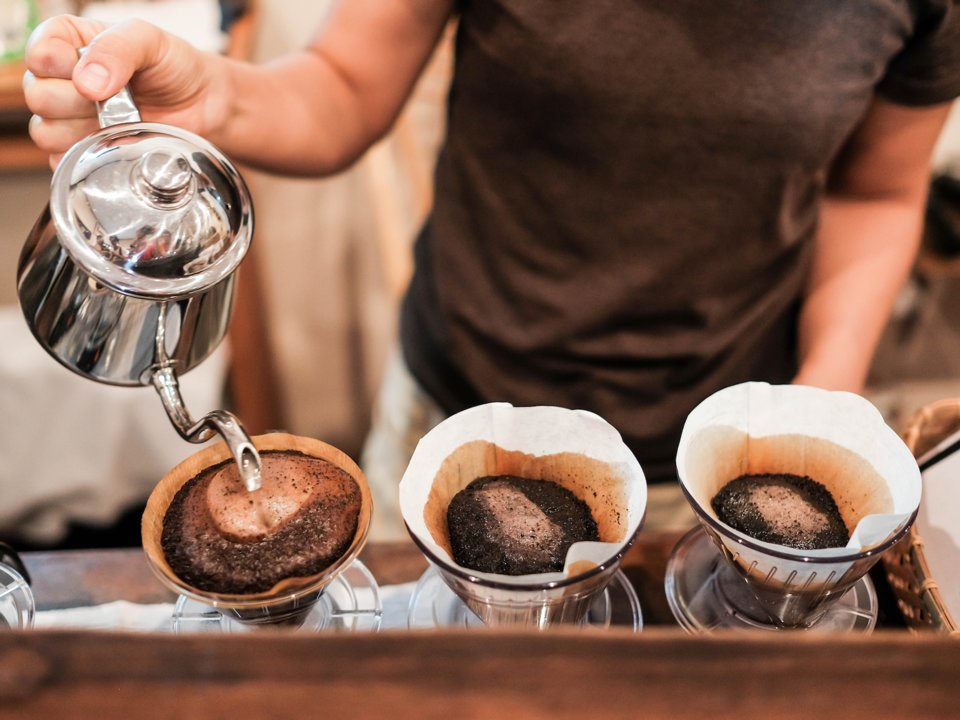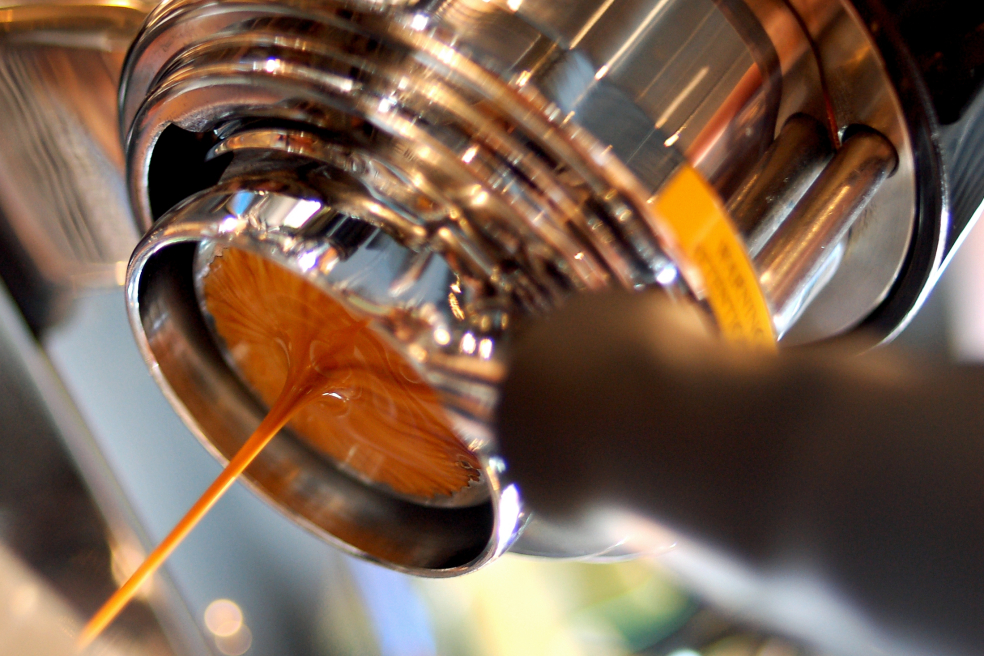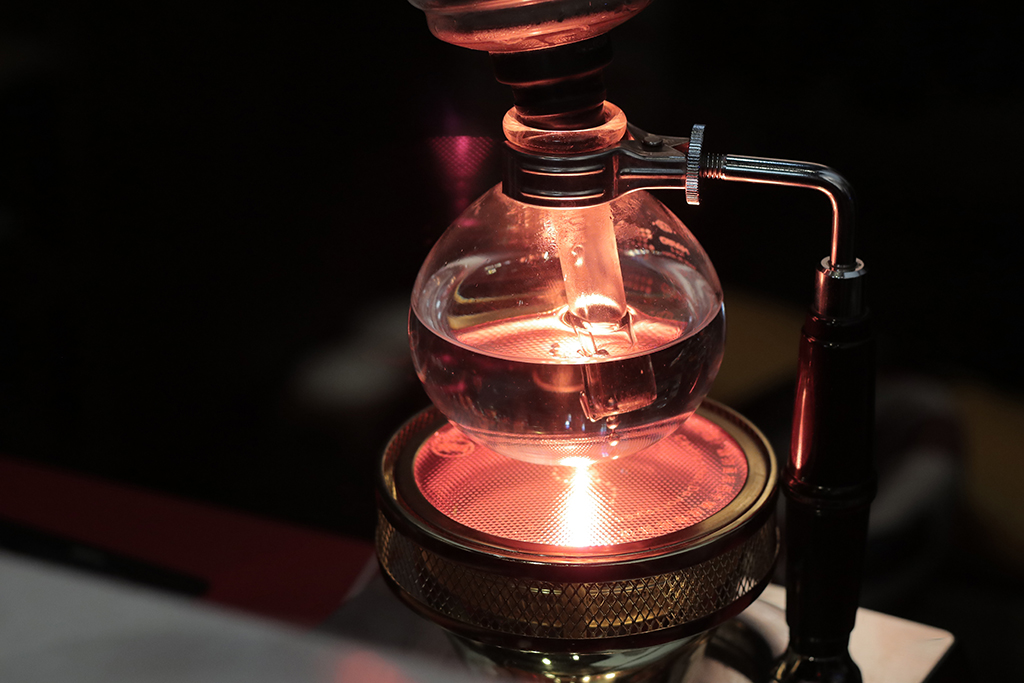What is the difference in flavor between light-roasted and deep-roasted coffee beans? Understand the basic concepts in 2 pictures

Professional coffee knowledge exchange more coffee bean information please follow the coffee workshop (Wechat official account cafe_style)
Coffee beans vary from stage to stage of baking. After the raw coffee beans absorb heat, the color changes from green to yellow, and the moisture content of beans begins to decrease. Heat converts moisture inside coffee beans into steam → coffee beans produce carbon dioxide inside → coffee beans internal pressure reaches 25 bar (pressure unit) → the first explosion: coffee beans in the roasting process will appear a very representative popping sound.
The development of flavor: the longer the baking time, the lower the sour taste and the higher the bitter taste.
Dehydrated coffee beans begin to release heat and turn brown, peeling off a layer of silver. The volume of roasted coffee beans will increase by 1. The weight is lost by at least 11% at this time.
Continue to roast coffee beans will continue to produce carbon dioxide → second explosion.
The color of coffee beans deepens and enters the medium-deep baking stage. At this point, the weight loss is up to 22% of the original weight. After the second explosion, the coffee beans are oiled due to pyrolysis and begin to carbonize, which is likely to be scorched if they are not careful.
Copyright ©Yannis Varoutsikos
Three or four aromas begin to develop during the drying stage. The aroma and flavor of coffee are released by two chemical reactions:
Mena reaction: chemical changes in sugars and amino acids to degrade proteins when the moisture content of coffee beans is less than 5%.
Caramelization: a chemical reaction between water, sugar, and sucrose.
With the longer the baking time, the sour taste will gradually decrease, the bitter taste will increase, and many aromatic molecules will begin to volatilize.
At the end of roasting, nearly 800 flavor substances will be developed, and the flavor, acidity, sweetness and mellowness of coffee beans will also reach maturity. But roasting can sometimes bring out the unpopular flavor of coffee. In the final stage, the aroma is destroyed and replaced by bitterness, the acidity is gone, and the mellowness is reduced.
Copyright ©Yannis Varoutsikos
Q1: can you judge the baking degree from the color of coffee beans?
The roasting of coffee beans does not have a uniform color can be used as a basis for the degree of baking, a more accurate method should be based on the total baking time to determine the time of the first explosion.
Q2: the longer the baking time, the higher the caffeine content?
The caffeine content of raw coffee beans hardly changes with the degree of roasting (caffeine loss rate is about 10%). However, the longer the coffee is roasted, the more weight the coffee loses (the weight ratio is about 110.22%), in which case the proportion of caffeine naturally increases.
Q3: how does the roaster determine the aroma of coffee beans?
When the coffee beans are roasted to a certain extent, the aroma will be gradually obscured by the roasted taste, only light roasting can retain the obvious aroma of coffee. Coffee roasters must compromise and decide which aroma features should be left behind.
For example, if the roaster wants the coffee to have a lot of aroma and taste sour, then the mellowness of the coffee will have to be sacrificed.
Moderate roasting can highlight the natural sour taste of coffee beans, while the heat from roasting destroys more than 40 chlorogenic acids in coffee beans and breaks down into quinic acid and caffeic acid, both of which have astringency and may affect the taste.
Most other organic acids, such as citric acid and malic acid, reach their maximum during light baking and then decrease gradually as the baking time increases. This explains why fast baking and light roasting are more likely to show the distinct sour taste of coffee beans.
(this article is sorted out and excerpted from "my proposal for Coffee Life", published by Sanchai.)
END
Important Notice :
前街咖啡 FrontStreet Coffee has moved to new addredd:
FrontStreet Coffee Address: 315,Donghua East Road,GuangZhou
Tel:020 38364473
- Prev

Do you want to raise Italian beans for Espresso? How long do you keep espresso beans?
Professional coffee knowledge exchange more coffee bean information please follow the coffee workshop (Wechat official account cafe_style) Italian espresso beans do you want to grow beans? The freshness of coffee is one of the hot topics discussed by SCA in recent years. Swiss chemist Samo Smrke put forward the relationship between CO2 content and coffee freshness and the factors affecting CO2 emission at the annual meeting of SCA the year before last. The study shows that
- Next

Of the six common ways to brew coffee in coffee shops, which one tastes best?
Professional coffee knowledge exchange more coffee bean information Please pay attention to the coffee workshop (Wechat official account cafe_style) Coffee coffee brews are made in many ways around the world, and the details of each way vary depending on the conditions set by baristas. Today, the editor will introduce several brewing methods that we may encounter in the future, first understanding the flavor that each brewing method will bring to coffee.
Related
- Beginners will see the "Coffee pull flower" guide!
- What is the difference between ice blog purified milk and ordinary milk coffee?
- Why is the Philippines the largest producer of crops in Liberia?
- For coffee extraction, should the fine powder be retained?
- How does extracted espresso fill pressed powder? How much strength does it take to press the powder?
- How to make jasmine cold extract coffee? Is the jasmine + latte good?
- Will this little toy really make the coffee taste better? How does Lily Drip affect coffee extraction?
- Will the action of slapping the filter cup also affect coffee extraction?
- What's the difference between powder-to-water ratio and powder-to-liquid ratio?
- What is the Ethiopian local species? What does it have to do with Heirloom native species?

